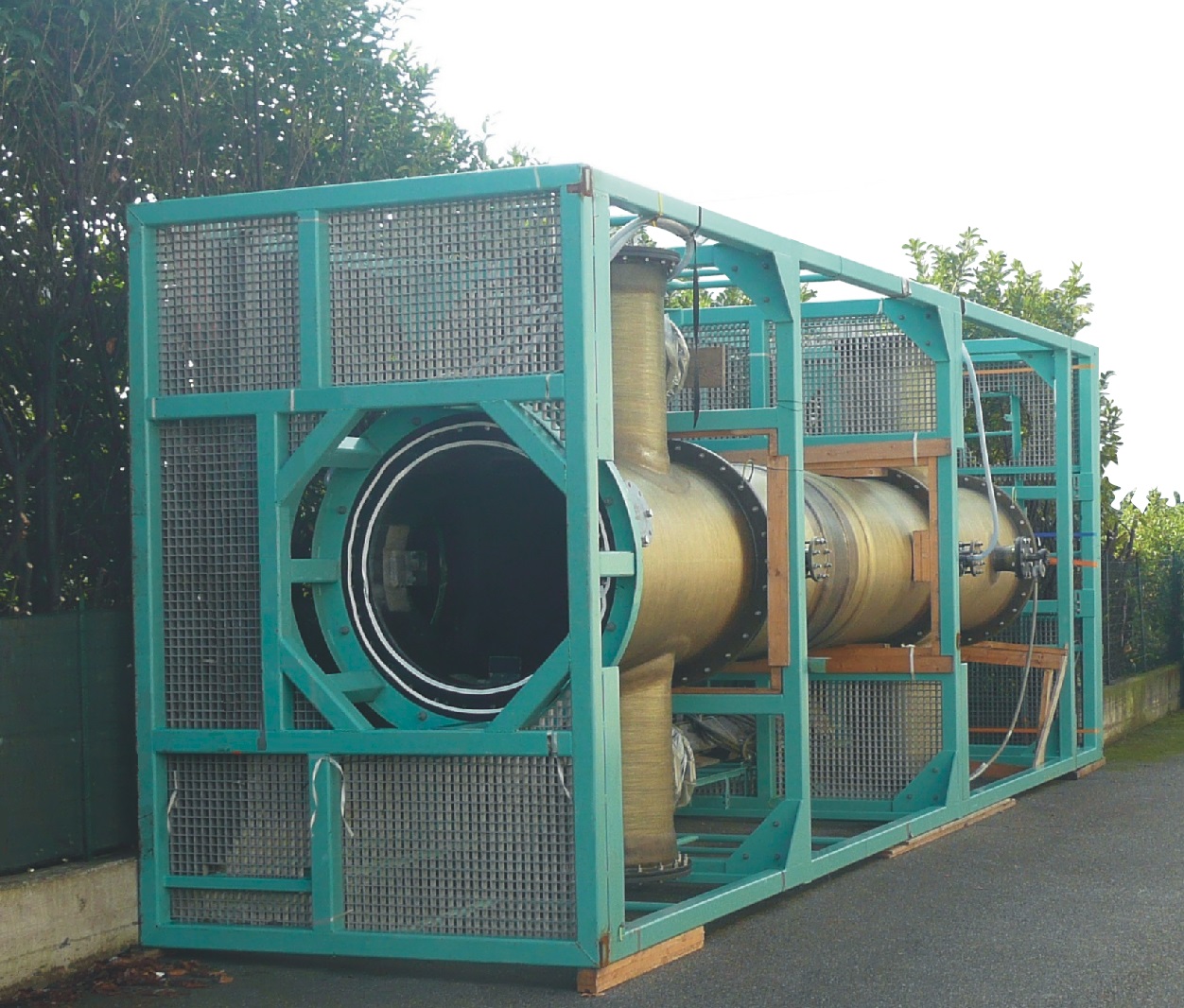

Fine dust is emitted by many different industries. The Wet ElectroStatic Precipitator (WESP) is regarded worldwide as a leading technology for separating particles in the submicron range.
Due to its robust construction the WESP is best suited to separate very aggressive mists such as hydrochloric acid, ammonia and even hydrofluoric acid. Also impurities such as sulphur oxides, aldehydes and phenols can be absorbed and separated.
At the same time, no consumables such as filter cartridges are required. Equipped with a scrubber section, the WESP can also handle hot gas streams directly.
The WESP convinces with its proven performance, compactness and low operating costs.

Application
Wet Electrostatic Precipitators are used when both, liquid and solid aerosols, are to be removed from gas streams. It is an efficient device to remove acids, solvents and oil mists as well as heavy metals.
Examples are phosphorous furnace emissions, removal of VOCs from waste gas of plastics manufacturing, mist elimination in sulphuric acid plats or gas treatment for waste incinerators.
Mode of operation
Wet Electrostatic Precipitators combine the cooling of the gas stream and the absorption of vapors with the removal of droplets and particles. The gas enters the unit from below, flows first into a scrubber section and afterwards through the collector section.
Scrubber section:
The scrubber performs several tasks. It creates a turbulent mixing allowing a good transfer of impurities to the washing liquid. Most of the solid particles are removed. At the same time the gas is cooled to full saturation.
The turbulent mixing assures a high mass transfer rate and the cooling creates excellent absorption conditions.
Collector section:
In the scrubber section the gas gets saturated with water. It then enters the collector section from below. Here up to 300 parallel collector tubes are possible. In the center of each collector tube there is a metallic rod, which serves as an ionizing electrode, the cathode. With high-voltage electricity it creates a strong electric field. The inner wall of the collector tubes serves as the anode. Liquid and solid particles, which flow in the gas stream between the rod and the tube wall are surrounded by ionized gas molecules. Together with them they are transported to the collector tube. The moment they touch the wall they are separated from the gas stream.
WESP model
Depending on the application and on the philosophy of designer there are different types of WESPs. We offer tubular WESPs with and without cooling of the tube walls.
Condensing tubular WESP:
The condensing tubular WESP represents the best available technology. With a cooling of the tube shells the tubes are chilled to the effect that at the inner surface the gas humidity forms a condensate film. This thin film catches the collected particles and transports them downwards. This design reduces the necessary amount of washing water significantly.
Tubular WESP:
If the aerosols that are to be separated do not stick to the tube wall but flow down easily, then simple collector tubes without shell cooling may be used. Under these conditions the separation efficiency is comparable and the operating costs are reduced, because no cooling energy is required.
Test Plant
With the available testing unit you have the possibility to check the function and efficiency of our design.


The test unit contains 7 collector tubes and can be installed in different ways. It is designed for a volume flow between 1600 m³/h and 2500 m³/h.
We will of course supervise the installation on site and give advice for the operation.